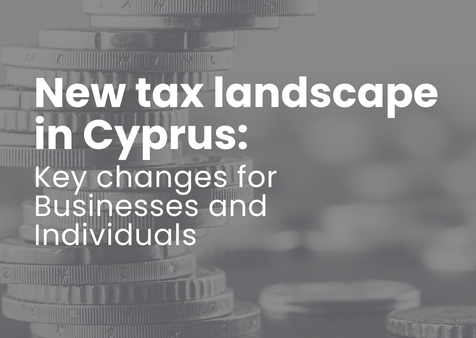DAC 6, the Directive on Administrative Cooperation in direct taxation (Volume 6) which aims to attack aggressive cross-border tax planning arrangements, came into force in the European Union with effect from June 2018. Member states were under the obligation to transpose the new rules into domestic law by 31 December 2019. Cyprus has prepared the draft Bill which is expected to be enacted into local law during the forthcoming months of 2020 with a backdated effect of June 2018.
The Directive focuses on mandatory reporting by intermediaries (service providers such as fiduciary firms, lawyers, accountants, auditors, banks, etc.) and “relevant taxpayers” involved in cross-border transactions which meet certain hallmarks. The requirement for the reporting to take place by the relevant taxpayer is triggered where the intermediary is a non-EU person, where no intermediary is involved or where an intermediary does not disclose owing to legal professional privilege.
Where there is more than one intermediary, the obligation to report lies with all intermediaries involved in the arrangement. An Intermediary shall be exempt from filing information to the extent that it has proof that this information has already been filed by another intermediary. Where there is more than one relevant taxpayer, the Directive puts the primary obligation onto the relevant taxpayer who agreed the arrangement and then, on to the one who manages the implementation.
The reporting is made to the domestic tax authorities, namely to the Cyprus Tax Department, in the case of Cyprus. DAC 6 introduces rules for the subsequent exchange of this information between member states’ tax administrations.
DAC 6 – “cross-border” arrangements and the 5 “hallmarks”
Under DAC 6, an arrangement will be considered “cross-border” where at least one of the participants is based in the EU regardless of the location of the other participants.
Furthermore, a “cross-border” arrangement may be reportable where it contains at least one of the “hallmarks” as defined below:
- Hallmark A: arrangements whose tax benefits are subject to confidentiality arrangements, that give rise to performance fees or mass marketed schemes;
- Hallmark B: arrangements such as the acquisition of companies with tax losses for related exploitation, the conversion of income into capital or other forms of income to avoid taxation, or so-called circular transactions via superimposing vehicles without commercial substance;
- Hallmark C: arrangements that give rise to tax deductions in one jurisdiction without a corresponding amount of taxable income in another, achieving double reliefs or deductions;
- Hallmark D: arrangements that have the effect of undermining the CRS or similar regulations with third countries, or the rules on identification of beneficial ownership;
- Hallmark E: arrangements concerning transfer pricing, use of “safe harbor” rules, etc.
Additionally, certain cross-border arrangements may be reportable if they are captured by the so-called “main benefit test”. To satisfy the test, one of the main objectives of the arrangement must be to obtain a tax advantage. The final text of the enacted legislation in Cyprus shall provide clarification in relation to what is considered a tax advantage under Cyprus law.
It should be noted that only direct taxation such as income tax is relevant for the purposes of determining tax planning arrangements within the scope of the Directive.
Reporting timelines & Penalties
The reportable arrangements for which the first implementation step should take place is for the period between 25 June 2018 and 30 June 2020. The transactions during the period should be reported by 31 August 2020. As from 1 July 2020 reportable arrangements should be reported within 30 days to the Cyprus Tax Authorities.
As far as penalties are concerned, the amount of penalty will depend upon the nature of the violation and is capped at EUR 20,000 per violation.
It should be noted that both the abovementioned dates and penalties are subject to final text of the legislation which shall be voted by the members of the Cyprus Parliament in the coming months.
Conclusions
In the light of the above, there is no doubt that DAC 6 has come to unravel and make tax arrangements/planning more transparent. Whilst considering the reporting burden created by DAC 6 on both intermediaries and their clients, it remains to be seen how efficient reporting methods will be and what effect such reporting shall have on taxpayers. If there are many intermediaries in a transaction and each of them needs to report on the same transaction, this may cause duplicate information reported to the tax authorities which will need to be processed carefully. In addition, taxpayers will need to centralize the reporting function to one of their intermediaries which has the relevant expertise in order to avoid additional reporting costs. It is therefore important that the intermediary used in the course of a centralized reporting strategy has the necessary tax, accounting, transactional and legal knowledge in order to identify relevant cross-border arrangements for the purposes of accurate DAC 6 reporting.


